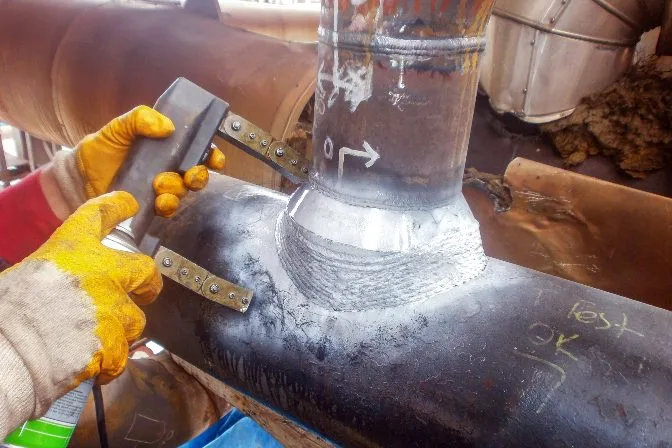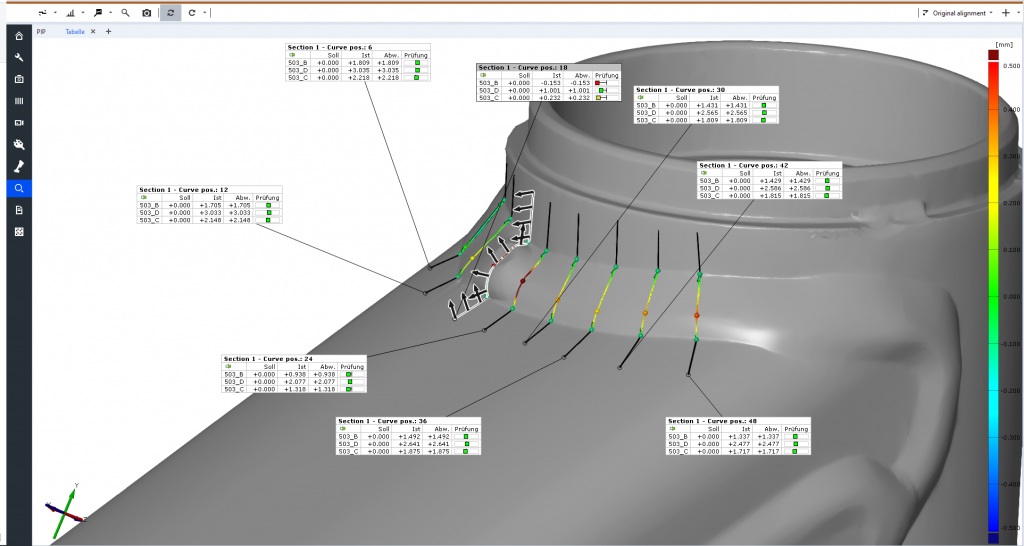Certified Houston Welding Inspection Professionals for High-Quality Assessments
Just How Welding Inspection Works: A Thorough Analysis of Methods, Criteria, and the Duty of Inspectors in Making Certain Structural Integrity and Security
Welding inspection is a crucial component in the construction and manufacturing markets, where the stability of welded joints is paramount to safety and security and integrity. Examiners are entrusted with not only reviewing weld quality versus rigid standards however additionally translating complicated codes and standards.
Relevance of Welding Examination
Welding assessment is vital in guaranteeing the stability and safety of bonded structures, with research studies indicating that approximately 70% of architectural failings can be mapped back to inadequate welding techniques. This emphasizes the significance of systematic examination processes throughout the welding lifecycle, from preparation to conclusion. Efficient evaluation not only identifies defects prior to they rise into considerable concerns however likewise makes certain conformity with industry criteria and laws.

The duty of welding inspectors extends beyond simple high quality control; they are essential in protecting public safety and security and lessening responsibility for companies. By applying rigorous examination procedures, companies can spot troubles such as incomplete fusion, splits, or excessive porosity, which can compromise the total strength of a bonded joint. Moreover, recurring training and accreditation of assessors add to the total quality control in welding procedures, promoting a culture of safety and quality.
Furthermore, welding assessment plays an essential role in maintaining functional performance. Determining problems early in the procedure facilitates prompt corrective activities, decreasing pricey rework and job delays. Ultimately, a durable inspection framework acts as a structure for reputable and sturdy welded structures, ensuring they meet both useful and safety and security demands.
Usual Examination Methods
Exactly how can one make certain the quality of welded joints throughout the inspection procedure? The execution of numerous inspection methods is critical in assessing weld integrity and recognizing possible problems. Typical approaches consist of Visual Evaluation (VT), which is typically the very first line of protection, allowing examiners to discover surface imperfections such as cracks, porosity, or insufficient blend by aesthetically examining the welds.
Ultrasonic Testing (UT) is one more extensively made use of strategy, utilizing high-frequency acoustic waves to determine inner issues within the weld. This approach is specifically effective for spotting problems that are not visible to the nude eye. Radiographic Testing (RT) makes use of X-rays or gamma rays to produce pictures of the weld, allowing the recognition of volumetric problems, such as incorporations or voids.
Magnetic Fragment Checking (MT) and Fluid Penetrant Checking (PT) are also popular approaches, focusing on surface flaws. MT relies upon magnetic fields to disclose surface area and near-surface gaps, while PT entails using a fluid color to highlight flaws. Each of these methods offers an unique purpose, making certain the thorough evaluation of bonded joints and securing structural honesty and safety.
Criteria for Examining Welds
The analysis of welds is guided by a set of well-known requirements that ensure both performance and safety and security in welded frameworks. These standards encompass various variables, consisting of weld size, account, and infiltration, which have to adapt to specified requirements. Compliance with sector codes, such as those established by the American Welding Society (AWS) or the American Society of Mechanical Engineers (ASME), is vital in determining the reputation of a weld.

Weld metallurgy plays a critical function; the assessment takes into consideration the blend top quality in between base and filler products, along with heat-affected areas. Finally, the total mechanical residential or commercial properties, including tensile toughness and ductility, must fulfill the needs established for the certain application. Jointly, these standards make certain that welds not just fulfill aesthetic standards yet additionally execute reliably under operational problems.
Role of Welding Inspectors
A welding examiner's expertise is essential in ensuring the integrity and top quality of bonded frameworks. These specialists play an important role in the construction and construction process by confirming that welding operations comply with established specifications and standards. Their responsibilities encompass a comprehensive range of tasks, including aesthetic evaluation of welds, evaluating welding paperwork, and carrying out site non-destructive screening (NDT) approaches such as radiographic or ultrasonic screening to recognize problems.
Welding assessors are also responsible for translating welding codes and criteria, making certain that the welders are certified which the materials utilized fulfill the essential needs - Houston Welding Inspection. They must preserve meticulous records of assessments, which offer as paperwork of conformity and quality assurance. Moreover, these inspectors usually work together with engineers and task managers to attend to any issues that develop during the welding procedure, giving referrals for corrective actions when necessary.
Along with technological skills, reliable communication is crucial, as welding inspectors must share findings plainly to stakeholders and help with training and support for welders. Ultimately, their role is essential to maintaining safety and security and reliability in bonded structures, adding substantially to the overall success of building projects.

Difficulties in Welding Evaluation
What barriers do welding inspectors deal with in their important role? The complexities of modern welding methods and products present considerable challenges for assessors tasked with guaranteeing conformity with more info here safety and security standards and architectural stability.
Furthermore, assessors often come across variants in worksite conditions that can hinder examination procedures. Factors such as ecological problems, accessibility, and the physical state of the welded frameworks can complicate complete evaluations. Time constraints imposed by task routines can even more pressure assessors, potentially influencing the thoroughness of their evaluations.
Furthermore, the subjective nature of some inspection approaches can lead to incongruities in assessments. Visual evaluations may differ based on the inspector's experience and read viewpoint.
Verdict
Welding evaluation is crucial for keeping architectural honesty and safety and security in different markets. Inevitably, efficient welding evaluation contributes substantially to mitigating dangers and boosting the total reliability of bonded frameworks.
Welding inspection is an essential part in the construction and production markets, where the integrity of bonded joints is paramount to safety and dependability.Welding assessment is vital in guaranteeing the honesty and security of bonded structures, with research studies suggesting that up to 70% of structural failings can be traced back to poor welding methods. Their obligations include a comprehensive range of jobs, including aesthetic examination of welds, examining welding documentation, and performing non-destructive screening (NDT) techniques such as radiographic or ultrasonic testing to identify issues.
Welding assessors are likewise responsible for translating welding codes and criteria, guaranteeing that the welders are certified and that the materials utilized fulfill the necessary requirements. Ultimately, effective welding evaluation contributes substantially to mitigating threats and improving the total dependability of welded frameworks.